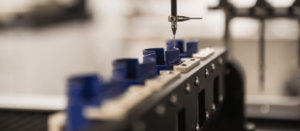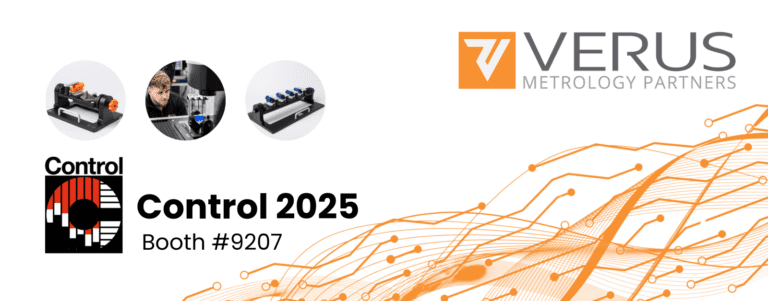
The perception of metrology as a mere business expense remains prevalent in the medical device industry, but in 2024, it’s crucial to reevaluate this perspective. While metrology is undeniably essential, dismissing it solely as a cost center neglects its potential to drive business value. This blog aims to shift the narrative by examining the intersection of metrology and profitability within the context of the medical device sector, emphasizing how it can contribute to innovation, risk management, and overall competitiveness.
There are two main areas where metrology creates profit-enhancing opportunities:
- Optimising productivity in your production and quality functions, i.e., doing more and doing it better with less
- Supporting strategic business initiatives that are crucial to achieving your objectives
In both these areas, taking a forward-thinking approach to metrology processes is essential. This includes being forward-thinking in how new and innovative solutions can deliver benefits that don’t compromise priorities like patient safety, product quality, and regulatory compliance.
To demonstrate this need for taking a forward-thinking approach, we’re going back to the 1800s.
Lessons From the Early 19th Century
Today, interchangeable parts are the norm in manufacturing. In other words, manufacturing identical parts so they can be easily swapped when required. In the 19th century, however, the use of interchangeable parts was cutting edge, as manufacturing lines were staffed by highly skilled workers who made each individual product by hand. The parts made by a single operator were not identical, let alone the parts made across the production line.
During the Napoleonic War in the early 18th century, this method of manufacturing wasn’t delivering on one unique but essential requirement of the British Royal Navy. It needed 100,000 pulley blocks a year for the rigging systems on its ships. This was a requirement that traditional manufacturing simply couldn’t deliver without a massive workforce of skilled labour.
So, the navy brought in Marc Isambard Brunel, father of one of the greatest engineers of all time – Isambard Kingdom Brunel.
Marc Brunel developed machines that could manufacture the pulley blocks. Once fully up and running, the machines could manufacture 130,000 pulley blocks a year. This not only exceeded the original requirement, but it did so with over 90 percent fewer workers than would be needed to produce the same amount of pulley blocks by hand.
How was this achievement possible? It was possible through a forward-thinking approach to mass manufacturing and a reliance on precise measurement.
The science of measurement is now known as metrology, and it continues to have positive impacts on productivity and, by extension, profitability in manufacturing operations. This includes in the medical device industry, where high-speed, high-volume, and highly regulated lines are the norm.
Enhancing Profitability Through Improvements in Productivity
When managed properly, improved productivity leads to higher profits. By optimising, modernising, and automating the metrology processes in your facility, and by working with an expert partner, you can improve productivity in the following areas:
- Quality
- Metrology equipment costs
- Production
- Compliance
Optimising the Performance of Your Quality Function
Driving productivity improvements is a key priority for medical device manufacturers. However, when looking at productivity improvements, the focus is typically on areas like production, packaging, and supply chain management. While all these areas are important, there are also productivity gains that can be made in the quality function of your facility and, more specifically, in relation to metrology.
One of the ways you can improve productivity in your quality function (and, by extension, enhance overall profitability) is by implementing the right metrology strategies, processes, and equipment.
There are five main ways that an optimised approach to metrology enhances quality function productivity:
- Reduced human error – human error is a reality when metrology processes are manual. These errors are a drain on productivity as they lead to other issues and often require additional resources to correct.
- Faster inspection processes – this one is a simple and easy-to-measure productivity gain in your quality function. By improving metrology workflows and automating or semi-automating processes, you will be able to inspect medical device products or components faster than is currently possible.
- Real-time, in-process inspection – modern technologies make it possible to implement real-time inspection processes on medical device production lines. Crucially, these real-time inspection solutions also deliver on compliance requirements. An essential component of real-time inspection is the fact they are in-process, i.e., taking place on the production line rather than in a separate location. The productivity gains that are possible from this metrology enhancement are substantial.
- Increased volume of inspected components – best-in-class metrology solutions enable the inspection of more products or components than is currently possible through standard processes. By inspecting more parts, you will have better batch quality data, thereby improving your overall quality control function.
- Minimised operator requirement – automated and semi-automated metrology solutions minimise the requirement for operator intervention. This means you need fewer operators to complete metrology processes, including dimensional inspection, allowing you to reallocate those resources to more productive tasks.
Reduced Metrology Equipment Costs
Metrology equipment is expensive to purchase and maintain. However, in many medical device manufacturing facilities, the equipment that is used is not fit-for-purpose. Usually, the equipment has been over-specified. The result of this is higher capital investment costs than what was needed, as well as ongoing maintenance costs that are also higher than necessary.
In a competitive market where every investment decision is important, optimising your expenditure on metrology equipment is essential, not least because it leaves more profits at the end of your accounting period.
Improved Production Line Productivity
Optimised metrology processes and systems can also help drive productivity improvements on production lines.
For example, by implementing optimised inspection routines that are semi-automated, you will have dimensional inspection data that can highlight product quality deviations. With this information, you can investigate the cause of the deviation and correct it before tolerance ranges are breached and batches of product have to be scrapped.
Reduces the Regulatory Burden
Regulatory compliance in the medical device industry is a necessary cost, but a cost, nonetheless. Therefore, making compliance as efficient, effective, and productive as possible should be a priority. Optimised metrology processes are not the only solution for reducing the regulatory burden, but they can make a significant contribution.
Supporting Strategic Business Initiatives
Metrology can also have a positive impact on business profits by supporting business initiatives. Here’s how:
- Risk mitigation
- Market reputation
- Competitiveness
- Decision-making
- Innovation
Reduced Risks
Inspection processes are all about minimising risk. In fact, your quality function is largely about risk mitigation. The risks that metrology aims to mitigate include:
- Risk of releasing sub-standard products into the distribution chain and the problems this can create
- Patient safety risks created by defective or sub-standard products
- Financial, regulatory, and reputational risks that are the result of product recalls
- Risk of product complaints because of quality issues
- Risk of manufacturing bad products, as bad products increase material waste in your facility and result in double work
- Risk of litigation due to product quality issues
- General reputational risks around your brand and the perception the market has of the quality of your products
All medical device companies aim to minimise risks, as not doing so can have a devastating impact on profitability. Metrology has an important role to play.
Enhanced Market Reputation
One of the points mentioned in the previous section deserves further exploration – the reputation you have for quality in the marketplace. In general, the better your reputation for quality, the more successful your products will be.
Metrology can help maximise product quality in your operations, enhancing profitability.
Improved Competitiveness
You will also be in a better position to compete when you have high-quality products and an excellent reputation in the market.
Effective metrology processes can also enhance competitiveness in other areas. Here are three examples:
- Helping get new products to market faster
- Improving manufacturing processes to ensure you can meet customer demand
- Minimising bottlenecks in the quality department that, again, help ensure you can fulfil customer orders on time and as required
Improves Decision-Making
Even small medical device production lines capture thousands of dimensional measurements every day. These measurements are used to make a range of decisions. The accuracy of the data you are working from is essential, as bad dimensional data will lead to bad decisions and, ultimately, lower profits.
Accurate dimensional data – data you can rely on – does the opposite, by improving decision-making.
There are several advantages that improved decision-making capabilities will bring:
- Help you optimise inspection processes
- Improve manufacturing processes
- Identify tolerance deviations before they breach limits
- Improve product quality
Supports Innovation
Effective metrology processes also support innovation by, for example, enhancing the R&D process. High-quality metrology support can also help you get to scale-up production faster and with fewer costly missteps along the way.
Conclusion: Metrology is About More Than Quality
One of the key takeaways from this blog on metrology and profitability is that your metrology processes can and should be about a lot more than quality control. That is not to undermine the importance of quality control and the role that good metrology processes play in driving productivity improvements.
Metrology, when viewed strategically, can deliver so much more, including improving profitability and moving you closer to Quality 4.0. Quality 4.0 is a whole other topic, however, that you can find out more about here.







